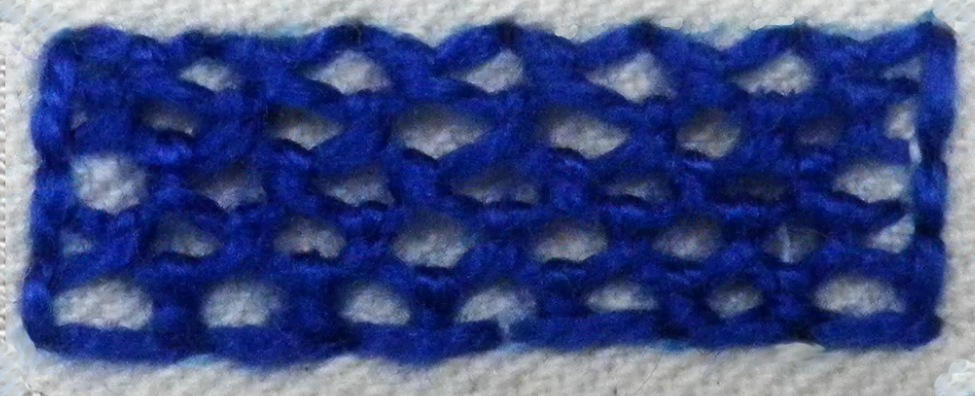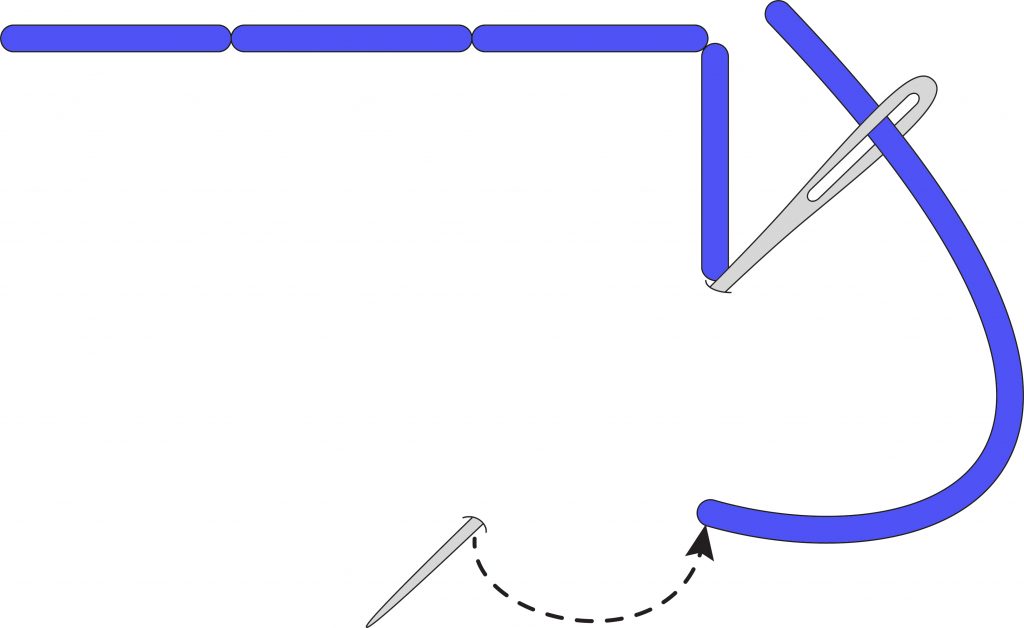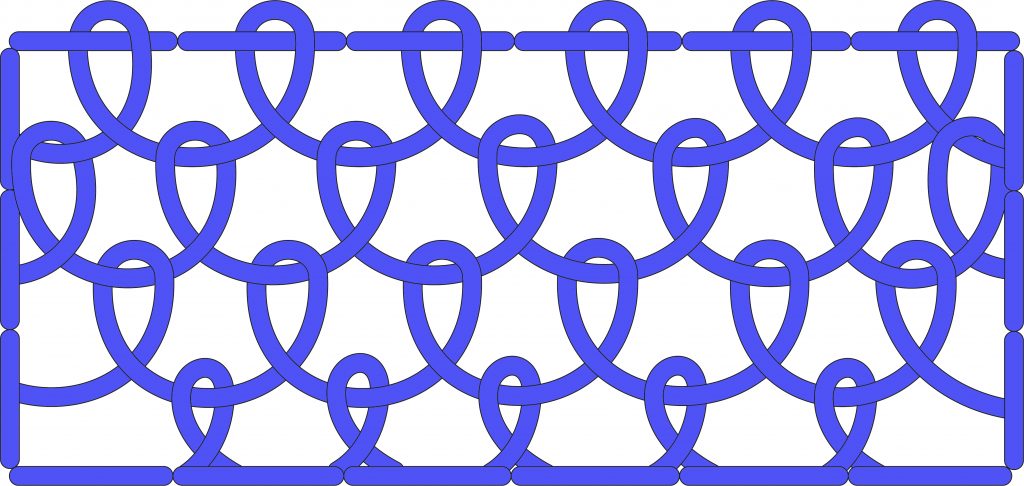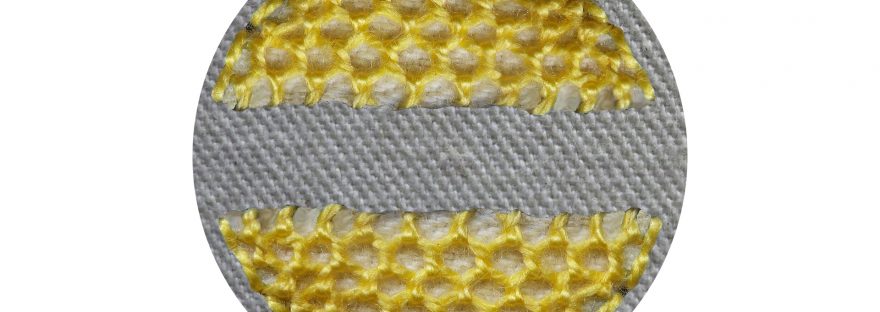
Detached Buttonhole Stitch forms the basis for most needle lace techniques which are used throughout the designs in our range of embroidery projects.
In the video clip at the bottom of this page, the small sample was worked with perle no. 5 thread on a rectangle measuring 30 x 10 mm. If you wish to experiment with the stitch before you work it onto your project, there is a template on the printable PDF document, and you should work with similar threads.
The stitch instructions and diagrams appear below, with the video clip at the bottom of the page. If you would like a printable version, click here.

- Using perle #5 thread, work backstitch around the entire shape. Aim to work 6 stitches on the longer sides and 3 on the shorter sides. These backstitches provide an anchor for the detached buttonhole stitches in the first row and, also, define the shape that you wish to fill.
Working the stitch:

- Coming out from under the backstitch, bring your needle up on the left side, as indicated in the diagram above.
- Working from the top down, go under the first horizontal backstitch. Note that you don’t go into the fabric, just under the backstitch and in later rows, through the loop.
- Making sure that the working thread is under the needle so that you catch the loop, pull through to form a buttonhole stitch.
- Work a detached buttonhole stitch through each backstitch in top row.
- When you get to the other side, go into the fabric tucking your needle under the backstitch on that side.
- Come up from under the backstitch further down, leaving sufficient space to accommodate the next row.
- Stitch the next and subsequent rows by working a detached buttonhole stitch into every loop between the stitches in the previous row, going into the fabric at the end of each row and coming up further down in preparation for the next row.
- When you get to the bottom of the shape, work each detached buttonhole stitch individually coming up from under the backstitch directly below the loop you need to attach. With the needle going over the working thread, pull through and go into the fabric having crossed over the thread that comes out of the fabric.
And now for the video clip that covers all of the above.
(Don’t forget to click the icon in the bottom right-hand corner to get it to full screen).

